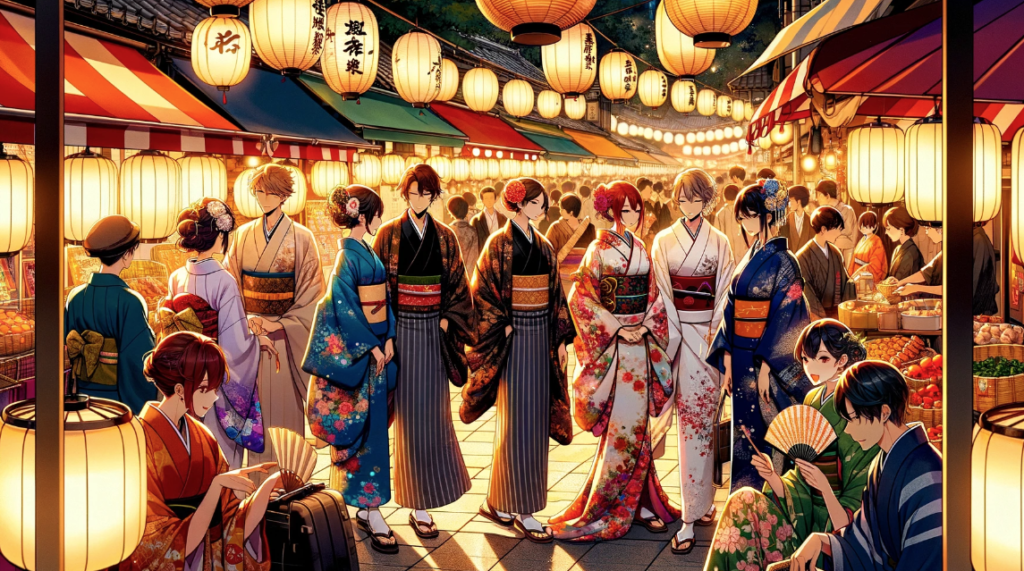
Lesson 5. Kimono and Yukata
Topic Question: Can you tell me about the traditional Japanese clothing, such as kimono and yukata?
No 1.
First, try answering the question yourself. – The instructor will provide advice on vocabulary, grammar, and expression corrections.
Sample Answer – Let’s read aloud – The instructor will check your pronunciation and accent.
Traditional Japanese clothing, notably the kimono and yukata, plays a significant role in Japan’s cultural identity. The kimono, which means “thing to wear,” is a full-length robe known for its long sleeves and wrap-around design. It’s made from various fabrics like silk, and its patterns can signify the wearer’s status, age, and season. Kimonos are usually worn on special occasions like weddings, tea ceremonies, and festivals. On the other hand, the yukata is a more casual version of the kimono, made from cotton and primarily worn during the summer, especially at festivals and fireworks displays. Both garments are worn with an obi, a belt that ties around the waist. The art of wearing a kimono or yukata involves meticulous attention to detail, from choosing the right fabric to the precise manner of folding and tying.
No. 2
5 Words to Learn and Their Meanings – Pronounce the Words Correctly (Pronunciation Training) + Make Sentences Using the Words Instantly
1. Cultural identity (文化的アイデンティティ): The identity or feeling of belonging to a group based on culture.
Folk music is an important part of our cultural identity.
2. Wrap-around (巻きつける): Something designed to be wrapped around the body and tied.
She wore a beautiful wrap-around skirt that she bought from the market.
3. Casual (カジュアルな): Relaxed and unconcerned; not formal.
The company has a casual dress code, so jeans are allowed.
4. Obi (帯): A wide belt used in traditional Japanese dress.
Choosing the right obi can completely change the look of a kimono.
5. Meticulous (細心の): Showing great attention to detail; very careful and precise.
Her meticulous nature is evident in the way she organizes her desk.
No. 3
Key Expressions and Example Sentences – Pronounce the Example Sentences of Key Expressions Correctly (Pronunciation Training) + Make Sentences Using the Key Expressions Instantly
1. Plays a significant role (重要な役割を果たす)
Education plays a significant role in personal development.
2. Signify (意味する)
The color of one’s kimono can signify many aspects of their status and personality.
3. Involves meticulous attention to detail (細部にわたる注意を要する)
Crafting traditional pottery involves meticulous attention to detail to ensure each piece is perfect.
No. 4
Discussion and Exchange of Opinions on the Sample Answer
Instructor: How do you perceive the significance of traditional clothing like kimono and yukata in modern society? Do you think such traditions are still relevant today?
Student: [Opinions of students]
No. 5
Free Discussion on the topic
Let’s discuss the globalization of traditional attire. Have you seen traditional Japanese clothing being worn or adapted in other cultures? How do you feel about the fusion of traditional and modern fashion elements?







